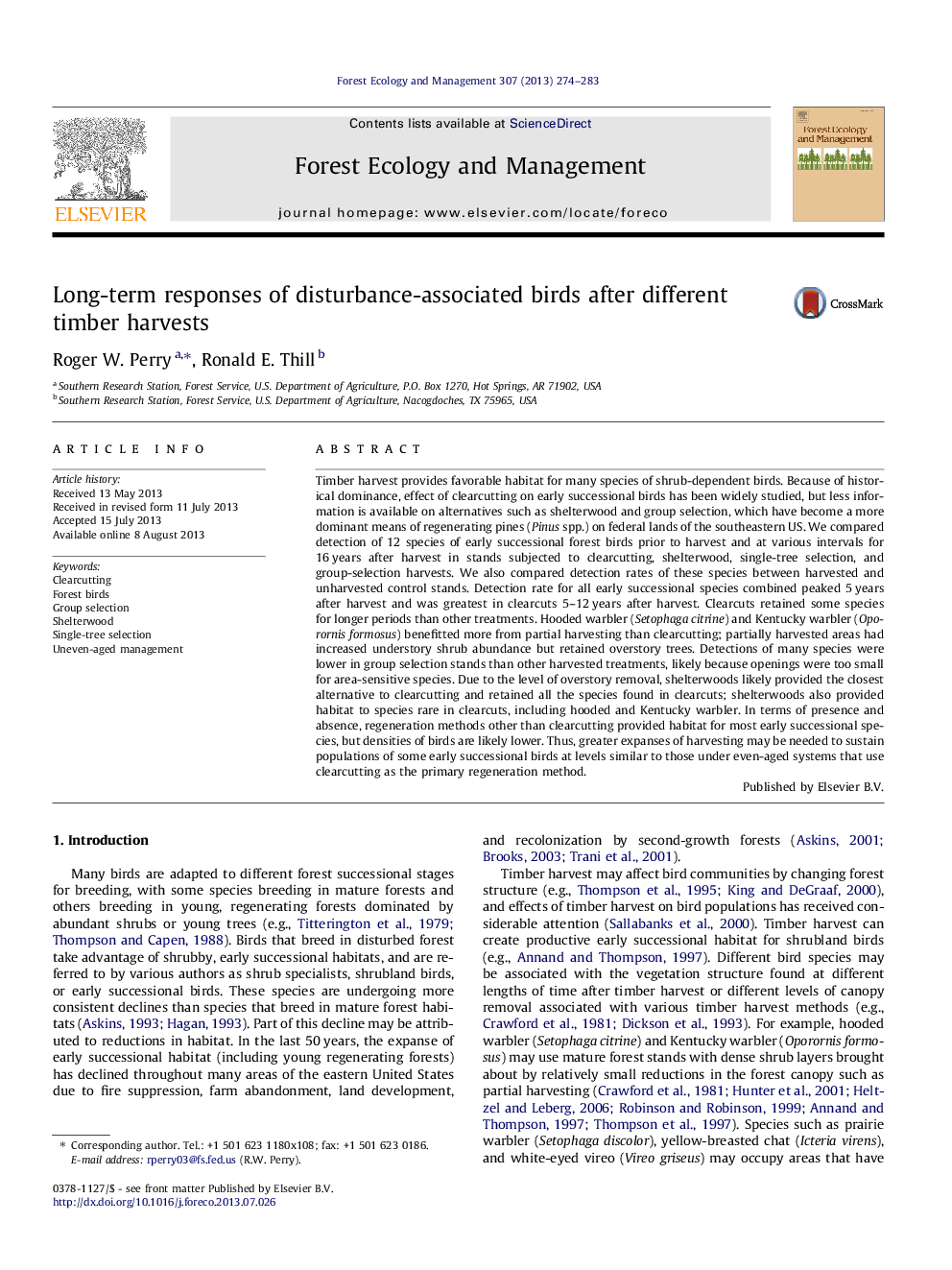| کد مقاله | کد نشریه | سال انتشار | مقاله انگلیسی | نسخه تمام متن |
|---|---|---|---|---|
| 6544082 | 159218 | 2013 | 10 صفحه PDF | دانلود رایگان |
عنوان انگلیسی مقاله ISI
Long-term responses of disturbance-associated birds after different timber harvests
ترجمه فارسی عنوان
پاسخ های طولانی مدت از پرندگان ناشی از اختلال پس از برداشت های مختلف چوب
دانلود مقاله + سفارش ترجمه
دانلود مقاله ISI انگلیسی
رایگان برای ایرانیان
کلمات کلیدی
موضوعات مرتبط
علوم زیستی و بیوفناوری
علوم کشاورزی و بیولوژیک
بوم شناسی، تکامل، رفتار و سامانه شناسی
چکیده انگلیسی
Timber harvest provides favorable habitat for many species of shrub-dependent birds. Because of historical dominance, effect of clearcutting on early successional birds has been widely studied, but less information is available on alternatives such as shelterwood and group selection, which have become a more dominant means of regenerating pines (Pinus spp.) on federal lands of the southeastern US. We compared detection of 12 species of early successional forest birds prior to harvest and at various intervals for 16Â years after harvest in stands subjected to clearcutting, shelterwood, single-tree selection, and group-selection harvests. We also compared detection rates of these species between harvested and unharvested control stands. Detection rate for all early successional species combined peaked 5Â years after harvest and was greatest in clearcuts 5-12Â years after harvest. Clearcuts retained some species for longer periods than other treatments. Hooded warbler (Setophaga citrine) and Kentucky warbler (Oporornis formosus) benefitted more from partial harvesting than clearcutting; partially harvested areas had increased understory shrub abundance but retained overstory trees. Detections of many species were lower in group selection stands than other harvested treatments, likely because openings were too small for area-sensitive species. Due to the level of overstory removal, shelterwoods likely provided the closest alternative to clearcutting and retained all the species found in clearcuts; shelterwoods also provided habitat to species rare in clearcuts, including hooded and Kentucky warbler. In terms of presence and absence, regeneration methods other than clearcutting provided habitat for most early successional species, but densities of birds are likely lower. Thus, greater expanses of harvesting may be needed to sustain populations of some early successional birds at levels similar to those under even-aged systems that use clearcutting as the primary regeneration method.
ناشر
Database: Elsevier - ScienceDirect (ساینس دایرکت)
Journal: Forest Ecology and Management - Volume 307, 1 November 2013, Pages 274-283
Journal: Forest Ecology and Management - Volume 307, 1 November 2013, Pages 274-283
نویسندگان
Roger W. Perry, Ronald E. Thill,
